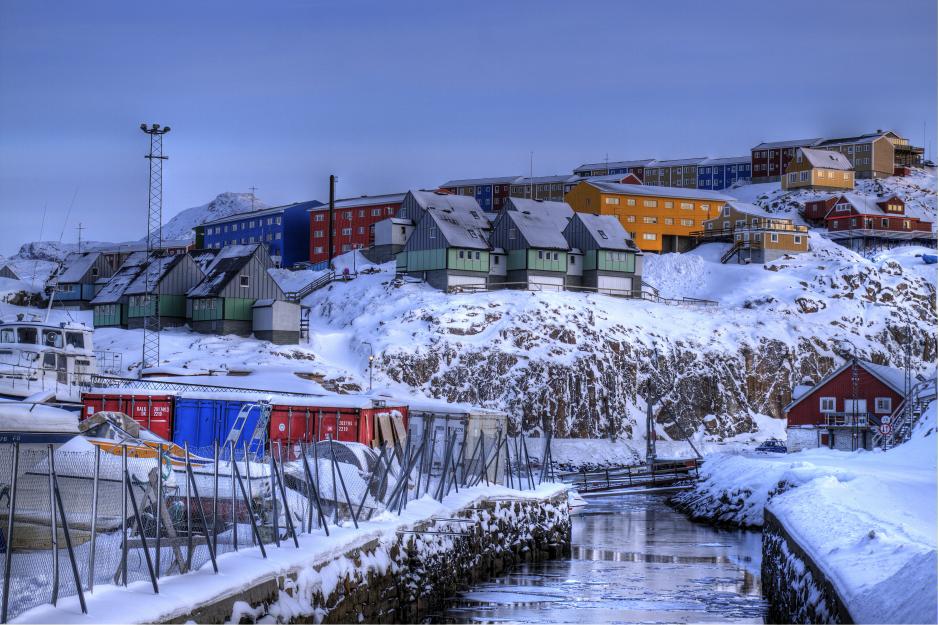Polish Entrepreneurs Go Arctic: Rethinking Circumpolar Investment

Poland is the latest country to enter into the growing Arctic investment market as rising temperatures and thinning sea ice create a more hospitable operating environment north of 66 Degrees.
On December 7, a delegation of over ten companies left for a four-day business trip to Denmark and Greenland as part of the Go Arctic campaign. Go Arctic, run by the Polish Information and Foreign Investment Agency, intends to boost Polish entrepreneurial investment in the Arctic regions of Denmark, Finland, Canada, Sweden, and Iceland.
Deepening Historic Arctic Science Commitments through New Investments
Go Arctic is intended to interest Polish businessmen and women in an economically growing region. Between 2000 and 2010, the Arctic’s regional growth far exceeded that of the eight individual Arctic nations. Its economic output, 0.6 percent of world GDP, was four times its share of the population, and at 442.8 Billion USD, the Arctic Gross Regional Product was equal to the entire national economies of Malaysia and Colombia in 2010.
This week, representatives of Polish business will participate in consultation visits with local authorities of Greenland responsible for natural resources, environment, justice, fishing, hunting and agriculture, construction, and infrastructure policies. Entrepreneurs will also meet with the Polish community living in Greenland.
Initially, the campaign is targeting Polish green technology, research, and development companies to invest in the rapidly changing region.
- At first we seek to usher in Polish companies linked to environment protection, but also construction companies capable of functioning in extreme weather conditions, as well as businesses operating in the mining industry, says Slawomir Majman, the head of the Polish Information and Foreign Investment Agency.
Go Arctic builds off a long, scientific history of Poland’s activities in the Arctic, beginning with the opening of its polar station on Svalbard in 1957 to its permanent observer status to the Arctic Council granted in 1998.
Leading A Regional Shift Towards Green Investment
With the launch of Go Arctic, Poland joins an already crowded field of non-Arctic states investing in the region. China, Singapore, and Korea, among many others, have increased their diplomatic engagement and economic investment in the region over the past decade as climate change makes resource extraction and shorter trade routes more viable.
Globally, investment in the Arctic could reach $100 billion over the next decade, and, by one estimate by the International Energy Agency, as much as $20 trillion by 2038.
Most of the circumpolar investments to date are involved in resource extraction and transportation. A USGS survey (U.S. Geological Survey, editorial remark) estimates that the Arctic holds almost a quarter of the world’s undiscovered conventional oil and gas. Unsurprisingly, many companies and countries have directed their financing to this “resource rush” amidst shifting climate conditions.
Pt Capital, an Anchorage-based international private equity firm investing exclusively in the Arctic, launched last month with more than $125 million to invest in infrastructure for oil, gas, and mining exploration. They are amongst many global investment firms, like Guggenheim Partners, who are poised to attract would-be investors and guide resource investment in a region that presents “massive” opportunity.
But with depressed petroleum and natural gas markets due to high supply and lower demand and a pending climate change deal at the UN Climate Summit in Paris this week, COP21, returns on circumpolar investments in fossil fuels has become uncertain. If, as stated by Majman, Go Arctic is targeted at companies linked to environmental protection, the program offers an adjustment in targeted investment away from resource extraction and towards entrepreneurship, clean technology, and green energy companies.
On Monday, December 7, the Confederation of Danish Industry and the Embassy of Poland in Copenhagen hosted a seminar, “Go Arctic, Go Global,” for the Polish business representatives and entrepreneurs visiting as part of the official Go Arctic delegation to learn about Danish solutions in the field of energy, climate adaptation, and environment.
Investing in Local Partners for Success
The seminar, which will also discuss the effects of COP21 on future Arctic investments, also aims to network Polish and Danish entrepreneurs to explore possibilities of joint ventures to boost and expand economic cooperation between Poland and Denmark.
Internal frameworks, such as the EU Research and Innovation Program Horizon 2020, will be considered as potential supportive mechanisms for bilateral economic endeavors.
The Center for Arctic Technology in Sisimiut Greenland, for example, may prove a fruitful local partner for Polish entrepreneurs. The center ducates Arctic engineers and carries out research testing in the field of Arctic technology developed there. It focuses primarily on energy efficiency and climate friendly technologies to reduce greenhouse gas emission but also to be resilient to climate change’s impacts. Currently, the center is piloting a low-energy house, experiments with wind power, and the setup of a solar heating system. With a joint venture through the Go Arctic program, such technologies could prove scalable and profitable beyond Greenland.
Ultimately, cooperation with local partners and the focus on green technology will be the true test of the Go Arctic program’s success not only for Polish entrepreneurs and the Arctic communities within which they operate, but for the future of the innovative circumpolar investment landscape in a rapidly changing region.
